Has a tyre pressure warning light appeared on your dashboard? The yellow symbol looks like the cross-section of a tyre with an exclamation mark inside. But what does the warning light mean, and what should you do about it?
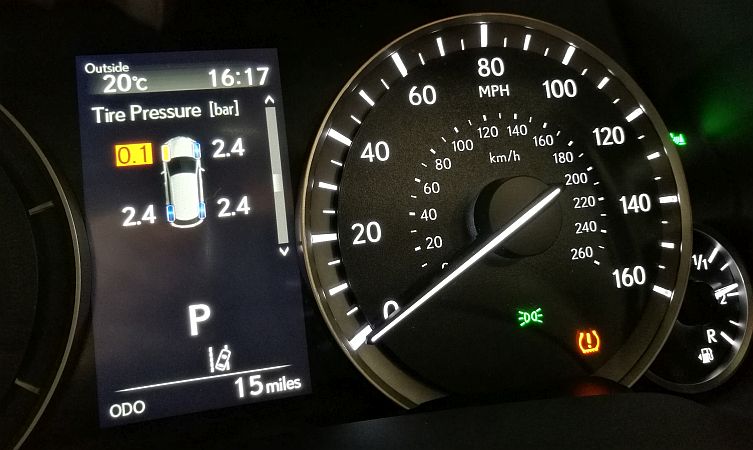
What is the tyre pressure warning light?
The warning light is an alert message to the driver that there may be a loss of air pressure from one or more of the vehicle’s tyres. It comes from the Tyre Pressure Monitoring System (TPMS), an active safety technology that has become a legal requirement for all newly launched and factory updated passenger cars sold in Europe since November 2014.
Tyres represent the only contact your vehicle has with the ground, so maintaining the correct tyre pressure has many safety and efficiency benefits. These include:
- Prevents accidents caused by a critical decrease in tyre pressure
- Helps the vehicle perform predictably
- Saves fuel
- Reduces emissions
- Optimises tyre wear
How does a Tyre Pressure Monitoring System work?
There are two types of TPMS: direct and indirect. Direct systems are installed in all current Lexus models as it is the most accurate method of electronic tyre pressure monitoring. This method uses a battery-powered sensor integrated into the valve assembly (see images below) to physically measure air pressure from within the tyre cavity itself.
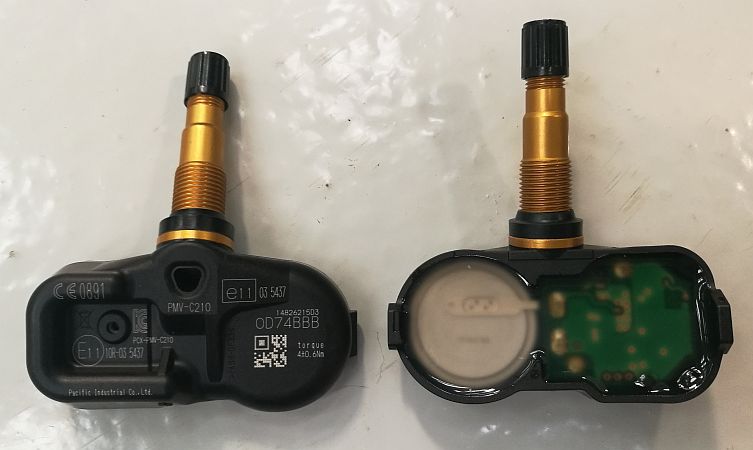
Data from the sensor in each wheel is transmitted wirelessly to a control module connected to the car’s central computer, which prompts a visible alert for the driver if any of the tyres lose pressure. The control module is programmed with the unique serial numbers of the valves within the car’s system, which ensures that the TPMS assembly in each wheel only communicates with its host control module.
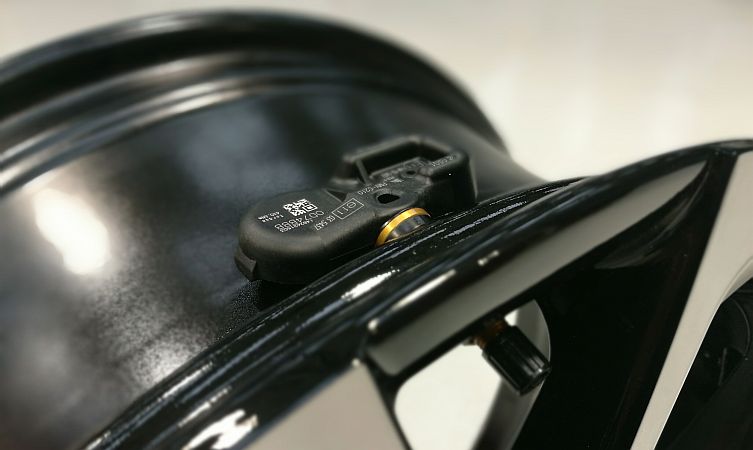
Some vehicles from other manufacturers adopt a more rudimentary indirect method that uses existing wheel speed sensors to ‘measure’ tyre pressure by detecting differences in the rate of wheel rotation. A tyre with less air pressure will have a smaller circumference and therefore spin at a faster rate than a wheel that has not lost air pressure.
What should I do if the tyre pressure warning light comes on?
If the warning symbol illuminates, the air pressure in at least one of your tyres will have dropped below a minimum tolerance level – often a deflation of around 20-25%. This may indicate a leak, puncture, or some other kind of damage.
Dramatic changes in ambient temperature, such as driving from a snow-capped mountain to a warm and sheltered valley, can occasionally cause direct systems to prompt an alert until the temperature has stabilised.
Irrespective of the circumstances, if the TPMS warning light comes on you should pull into a safe area and visually check the tyres. If any appear to be deflated yet undamaged you should try to re-inflate them to the correct pressure and reset the TPMS (see subheading below).
If the tyre has sustained more serious damage, it will be necessary to either continue your journey on the spare wheel, carry out a temporary repair using a tyre repair kit, or call an emergency breakdown service for a lift to a tyre centre.
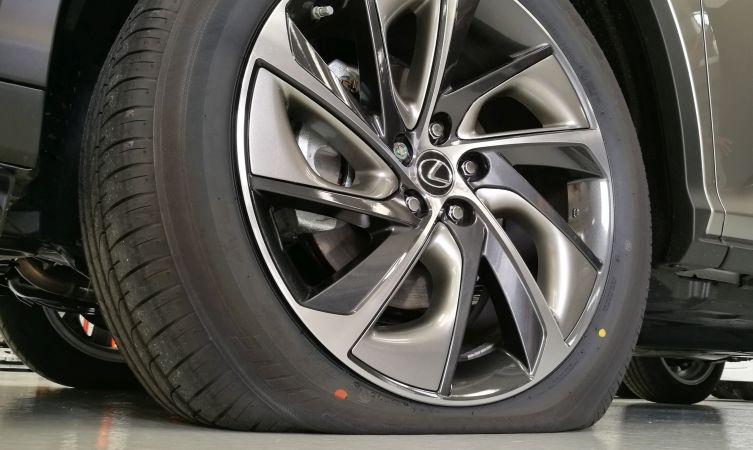
How do I turn off the tyre pressure warning light?
Use the box below to identify how to access the TPMS reset facility in current Lexus models. The majority of models feature reset access within the software menu of the multi-information display in the main instrument cluster. The only exception is the RC F, which uses a physical reset button.
In the case of the RC F, owners simply need to turn the ignition on, then press and hold the TPMS button. The warning light will flash a couple of times and then extinguish, at which point the system has been reset. For systems accessed via a software menu, instructions for resetting the TPMS will be shown within the multi-information display.
| MODEL | RESET ACCESS | LOCATION |
| UX | Software menu | Vehicle Settings menu on multi-information display |
| RZ | Software menu | Vehicle Settings menu on multi-information display |
| NX | Software menu | Vehicle Settings menu on multi-information display |
| ES | Software menu | Vehicle Settings menu on multi-information display |
| RC F | Button | Under dashboard on driver’s side |
| RX | Software menu | Vehicle Settings menu on multi-information display |
| RX L | Software menu | Vehicle Settings menu on multi-information display |
| LC | Software menu | Vehicle Settings menu on multi-information display |
| LS | Software menu | Vehicle Settings menu on multi-information display |
What should happen if I replace any tyres?
The condition and function of the TPMS valve and sensor assembly should be checked each time the tyres are replaced. This will involve a physical inspection and electronic diagnosis using a proprietary technology (example device shown in image below).
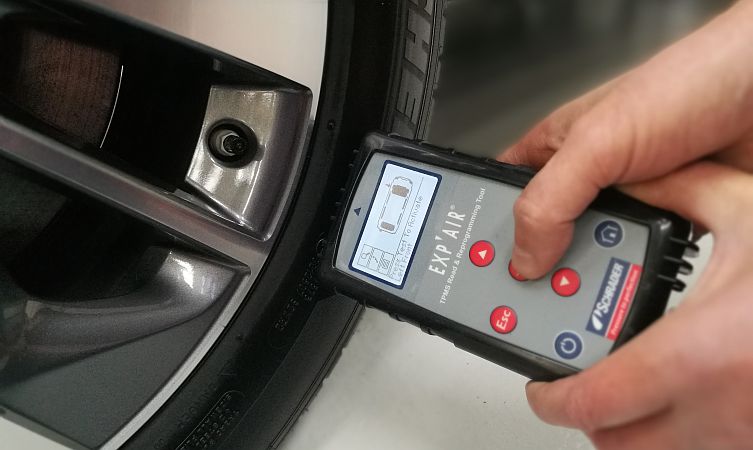
The integrated battery has a life expectancy of around ten years and cannot be replaced. Electronic diagnosis should reveal the health of the battery, which will help you decide whether to replace the entire unit at the same time as the tyre.
Although the main assembly of the valve is robust, parts exposed to the atmosphere can deteriorate over time. So if the battery level is adequate and the main unit is being retained, it would still be wise to have the grommets, washers, collars and cores (see image below) replaced as a matter of course.
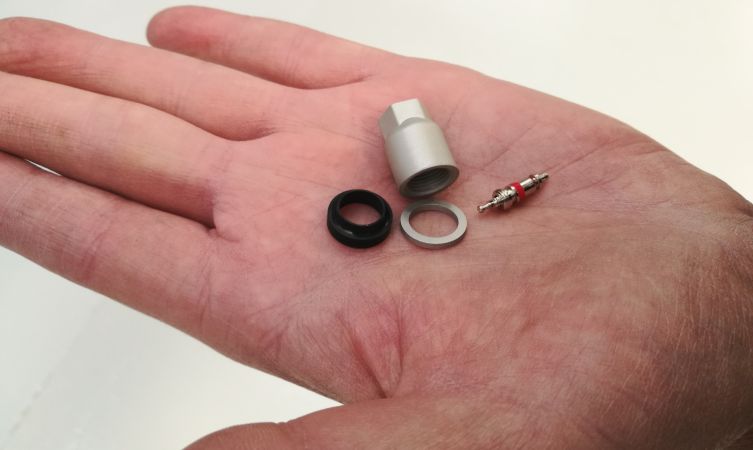
Will changing the wheels affect the TPMS?
Due to the accuracy and complexity of direct measuring, the TPMS control module is designed to recognise and communicate with only one set of wheels at a time. So if you regularly switch wheels (such as changing from summer to winter wheels) it will be necessary for a qualified technician to reprogramme the control module through the vehicle’s OBD port.
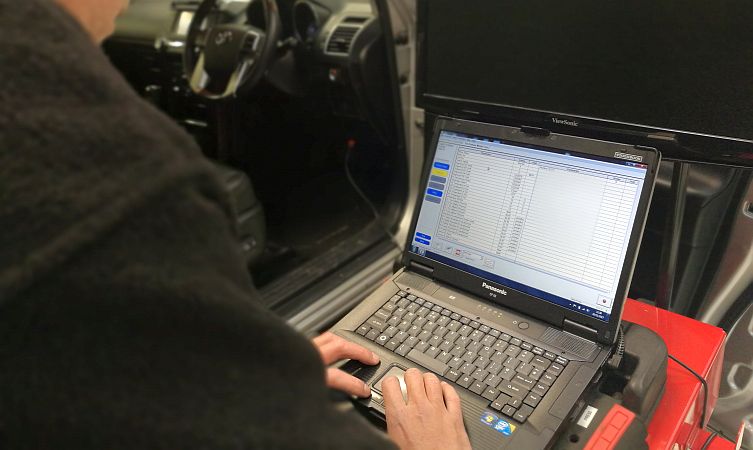
There are occasions when it may be necessary to drive on a wheel that is not equipped with a TPMS valve, such as after a puncture when the spare wheel is fitted. Under such circumstances, the warning light will remain illuminated. The vehicle or tyre monitoring system will not be damaged but the vehicle cannot pass its annual MoT test if the warning light is on.
Do I still have to check my tyres manually?
Although TPMS is designed to deliver a safety alert in the event of a significant loss of tyre pressure, it does not replace manual inspections. Each tyre should be regularly checked to see if it is inflated to the correct air pressure and has sufficient tread depth.
Learn more: Lexus tyre pressure and size guide





How to recall a navigation command if not clear due to noise?
Hello, thanks for your question.
Please provide your Vehicle Registration so that we can look into this.
Thanks.
I have a Lexus CT 200. RX64ULL
I want to know what the tyre pressure should be on all tyres.
Hello Jill, thanks for getting in contact.
We would recommend consulting your Owner’s Manual.
This can be viewed online here: https://www.lexus.co.uk/owners/about-my-lexus/manuals
Thanks.
Tyre pressure info on dashboard?
Hi Ali, thanks for getting in touch.
Please could you clarify your question.
Thanks,
Lexus UK
Which models have the individual tyre pressure display on screen . I have a 2017 nx 300h premier . Does it come with that meaning this one is faulty or just the warning light
Hello Joseph, thanks for your question.
Please provide a Vehicle Registration so that we can look into this.
Thanks.
Lt67 rzn
Hello Joseph,
This vehicle is equipped with a tyre pressure warning light. You can see more information on this on Page 596 of your online Owner’s Manual. This can be accessed here: lexus.co.uk/owners/about-my-lexus/manuals.
Thanks.
For Lexus 2019 month June from Japan from where I can find the update of the AirPlay for the monitor.
I drive a 2006 IS250 does it have direct or indirect TPMS?
Hello Taseen, thanks for your comment.
Please provide a Vehicle Registration so that we can look into this.
Thanks.
GK55AXY
Hello Taseen,
Our Technical Team have advised that there is no TPMS installed on this vehicle.
Thanks.
Thanks for the reply.
You say the battery only lasts ten years and is not replaceable. On a previous car the metal stem was stepped on by a hand car washer, it snapped off and the tyre went flat instantly. An aftermarket sensor was fitted by my local tyre specialist for £60. Dealer price woud be £160.
Why is the battery not replaceable? How much is a new complete sensor.
How do I change the display from bar to PSI?
Hello Fivish, thanks for contacting us.
Please can you provide your vehicle registration so that we can better assist you with these queries.
Thanks.
I have a GS300 2007 and the TPMS light is on ‘static’. I’ve taken it to a Lexus garage and they reset the system but 4 days later the same error occurred. The tyre valves were also checked and confirmed to be okay. I’m not sure what to do next as the car is due for an MOT in the next month and I’m not sure it will pass with these dashboard lights displayed.
Any advice would be welcome.
Hello, thanks for getting in touch.
We are sorry to hear you are experiencing these difficulties.
We would recommend re-contacting your local Lexus Centre to seek the technicians’ advice. They are best placed to assist and support you with this.
Please let us know if we can help further.
Thanks.
I have a 2020 Lexus Nx300h. It doesn’t show the individual tyre pressure display on the screen. Does it meaning this one is faulty or just the warning light?. My VRM K11 VLM
Hello, thanks for your query.
We would recommend consulting your Owner’s Manual for this information.
You can access this online here: https://www.lexus.co.uk/owners/about-my-lexus/manuals
Thanks.
How do I reset the TPMS on my 2016 CT200
Hi Gary, thanks for your comment.
This will be detailed in your Owner’s Manual, which can be found when entering your VIN here: https://www.lexus.co.uk/customer/manuals
Thanks,
Lexus UK
What is the tyre pressure for a Lexus LBX 2024
Hi Darren,
This should be stated in your vehicle user guide, or just inside the door seal.
Thanks,
Lexus UK
Have a right hand drive 2009 ls600 hl and in the middle of a journey the warning triangle lit up and the tire pressure warning as well. Checked all pressures and all as should be ( haven’t checked spare). Cannot find the TPMS reset button in any of the places suggested – under dash, above the accelerator, in the glove box but no luck.
Any suggestions please on how to solve
Hi Ian, thanks for getting in touch.
Your local Lexus Centre is best placed to take a closer look at this.
Thanks,
Hi, if i changed the wheels from 205/55 r16 to 225/45 r17 on my is 300h 2013 what do I need to do for tyre sensor to disappear from dash board?
Good morning,
We will require your full registration to advise further.
Thank you.